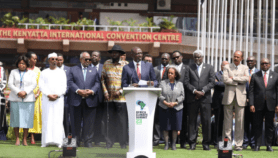By: T.V. Padma
Send to a friend
The details you provide on this page will not be used to send unsolicited email, and will not be sold to a 3rd party. See privacy policy.
[NEW DELHI] India has launched an exhaustive study on the source, distribution and impact of soot released into its air — especially on climate and glaciers — that will help evidence-based policy-making.
The five-year research agenda will involve about 250 scientists from institutes under the department of space, ministry of earth sciences and ministry of environment and forests at an estimated cost of US$45 million, environment minister Jairam Ramesh said at the launch this week (29 March).
The ‘black carbon research initiative’ is the third part of a series of studies initiated under the Indian Network for Climate Change Assessment (INCCA) programme, launched by Ramesh’s ministry in October 2009.
INCCA also covers a greenhouse gas inventory and a ‘four by four’ assessment of the impact of climate change in four sectors — crops, health, water resources and biodiversity — in the Himalayas, the northeast, the Western Ghats and the coastal regions.
Soot, or black carbon, formed by the incomplete burning of firewood, biomass, dung and diesel, varies across regions, and according to source. Globally, 40 per cent of soot is released from fossil fuels, 20 per cent from biofuels and 20 per cent from biomass.
J. Srinivasan, professor at the Divecha Centre for Climate Change, Indian Institute of Science, Bangalore, who will head the multi-disciplinary team, said there is a need for more comprehensive data, and better understanding of several aspects of soot and its environmental impact.
The programme aims to better understand how soot warms or cools the air and the climate in longer term; the exact ratio of soot due to fossil fuels and biomass burning; its impact on cloud formation, rain and water cycles, and formation of fog, especially over northern India; and its role in the melting of Himalayan glaciers.
Towards this end, the programme will map the distribution of black carbon in four dimensions — latitude, longitude, height and time. It will also address the high levels of dust over many parts of India, and its interaction with soot.
Veerabhadran Ramanathan, OF THE Scripps Institution of Oceanography at the University of California, San Diego, said India’s proposed programme was one of the "most ambitious research programmes in aerosols (particles in the air)".
Ramanathan said, at the launch, that "decades from now, it is likely this programme will be recognised for providing the scientific foundation for protecting India from natural and man-made disasters".













